I remember working on a plain pillowcase one weekend and thinking, “This needs something extra.” So, I flipped through my machine’s stitch settings and found this cute little vine design I’d never used before.
I tested it on a scrap piece first (which you should always do, trust me!), and the results? Totally addictive.
So I decided to try more decorative stitches on sewing machine. And each of them comes out so good.So I decided to share the ideas with my sewinginspo readers. So here I am.

Table of Contents
Types Of Decorative Stitches On Sewing Machine
Decorative stitch thread art of different styles. There are also many different types of decorative stitches. For example, of types of decorative stitches,
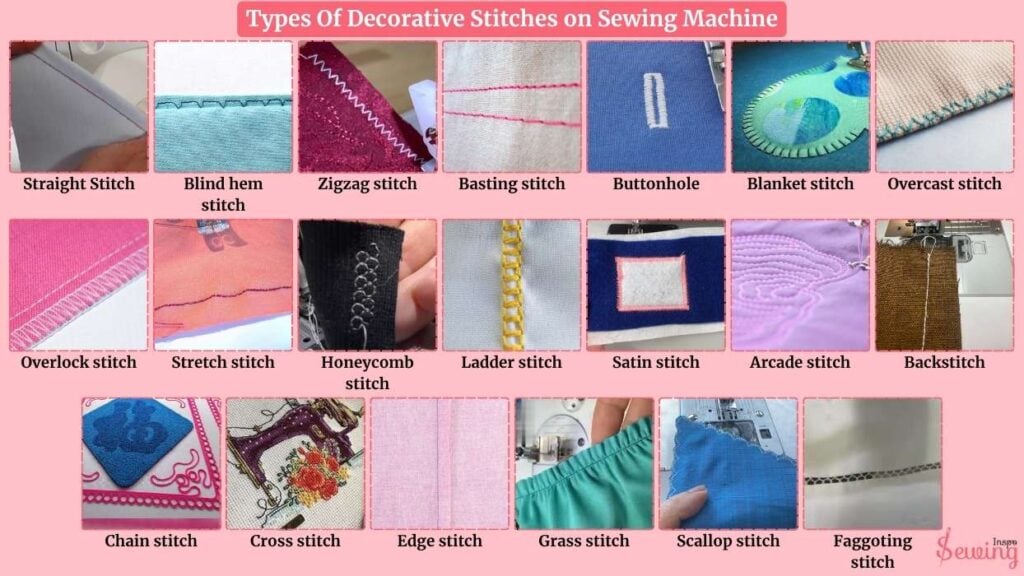
- Honeycomb stitch
- Ladder stitch
- Satin stitch sewing machine
- Arcade stitch
- Backstitch
- Chain stitch
- Cross stitch
- Edge stitch
- grass stitch
- Scallop stitch
- Faggoting stitch
Each stitch brings out the best thing, trust me. But don’t forget to test every stitch on scrap fabric first. Decorative stitches can appear quite differently depending on the fabric type, thread weight, and tension settings.
Uses Of Decorative Stitches
Decorative stitches aren’t just there to look pretty (though they definitely do that). They can add style, texture, and even function to your sewing projects. Here is few common uses of sewing decorative stitches,
- Lettering & Monograms
- Embellishing Garments
- Topstitching with Style
- Personalizing Home Décor
- Quilting Accents
- Appliqué Edging
- Mending with Style

How To Use Decorative Stitches On Sewing Machine?
The other day, I finally decided to give raw-edge appliqué a try using the decorative stitches on my sewing machine—and let me tell you, it totally changed my stitching.
I continued to experiment with various machine embroidery designs from time to time. The use case varies depending on the type of stitches. But for today, I am demonstrating grass stitch,

Prep Fabric & Stabilizer For Sewing Machine Decorative Stitches
Before anything else, I prepped my fabric and stabilizer. I used a medium-weight tearaway stabilizer underneath my main fabric to keep the stitching firm and smooth. This helps avoid puckering and messy results. I also do this for a catch stitch.
I used 100% cotton quilting fabric for the applique base. This fabric is sturdy enough to withstand dense decorative stitching without warping, providing a smooth surface to work with.
I cut my fabric 12″ x 12″ so I had plenty of room to move the fabric while stitching and could later trim it down neatly.I also did a feather stitch on a sewing machine on it once. And it works so nicely, too.
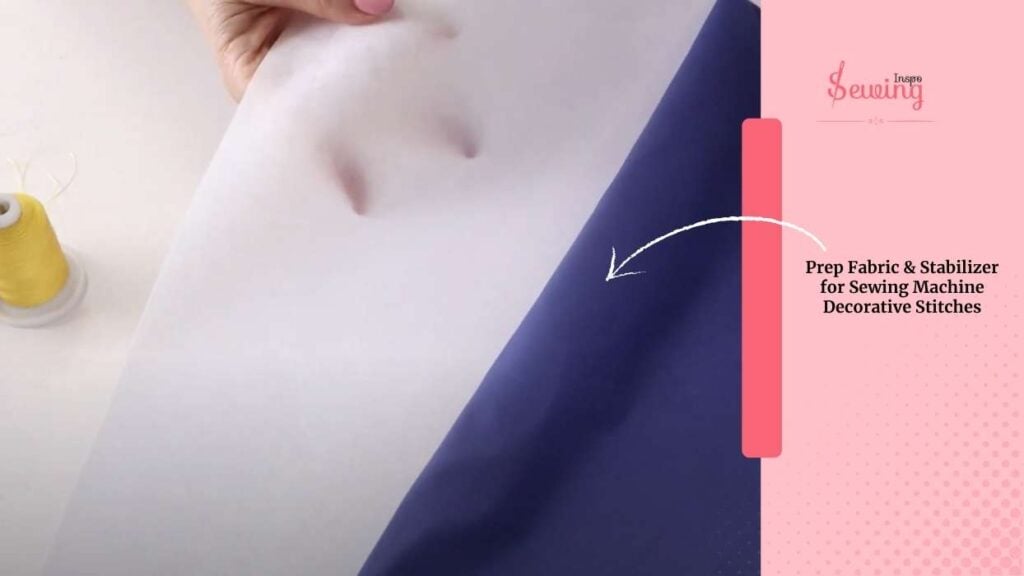
Choose The Best Thread For Decorative Stitches & Needle
I threaded my machine with Polyester and rayon and used a bobbin filled with the bobbin. Then I popped in a size 75 embroidery needle. It’s sharp and has a larger eye, perfect for decorative threads. You can use this for pick stitch sewing machine.

Adjust The Machine Settings For Decorative Stitches
Next up—tension! I lowered the top tension to around 2–3 so the top thread would lay full and the bobbin thread stayed hidden. . I also use this technique for the box stitch.
Now, here’s a golden rule I learned:
Loosen your top tension just a bit. I usually drop it somewhere around 2–3. That way, the bobbin thread stays hidden and the top thread fluffs up nicely on the back, giving the stitch some volume. I maintain this for the pad stitching machine. Trust me, it works so nicely.
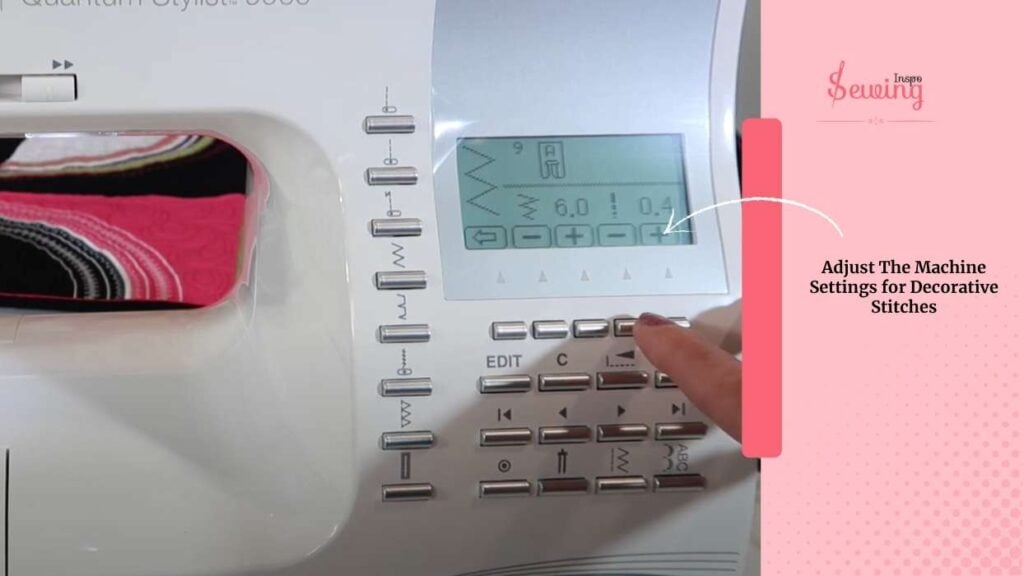
I Began With The Grass Stitch—Smooth On One Edge
I began with the grass stitch—smooth on one edge. Jagged on the other—great for outlining the sea dragon’s body. I aligned the center of my presser foot with the edge of the appliqué so half the stitch sat on the design and half on the fabric. I use this for whip stitch on sewing machine too.
- For shaggy stitch (used on outer pieces), I didn’t stress about precision—it’s meant to look wild and textured.
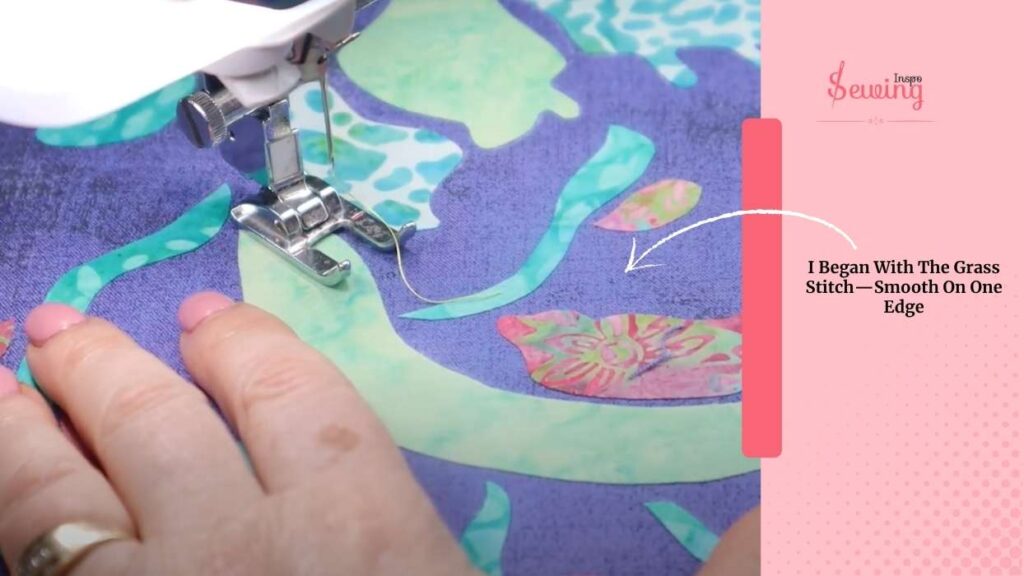
- For corners, I shifted at just the right moment, depending on the curve:
- Inside curves: Stop with the needle on the inside edge, just like cover stitch.
- Outside curves: Stop on the outside edge like ladder stitch sewing machine
Corners: Stitch to the point, pivot, slightly overlap into the last stitch
Secure & Finish It Off Decorative Stitches With Tie-Off And Thread Cutter.
When I was done, I overlapped the beginning slightly and used the machine’s tie-off and thread cutter. It tied up the thread with tiny locking stitches and automatically pulled it to the back—super clean finish! It’s even easier to do it on a Juki machine.
If your machine doesn’t have this function, just pull threads to the back and tie them manually. Or you can use lock stitch machine to secure it.
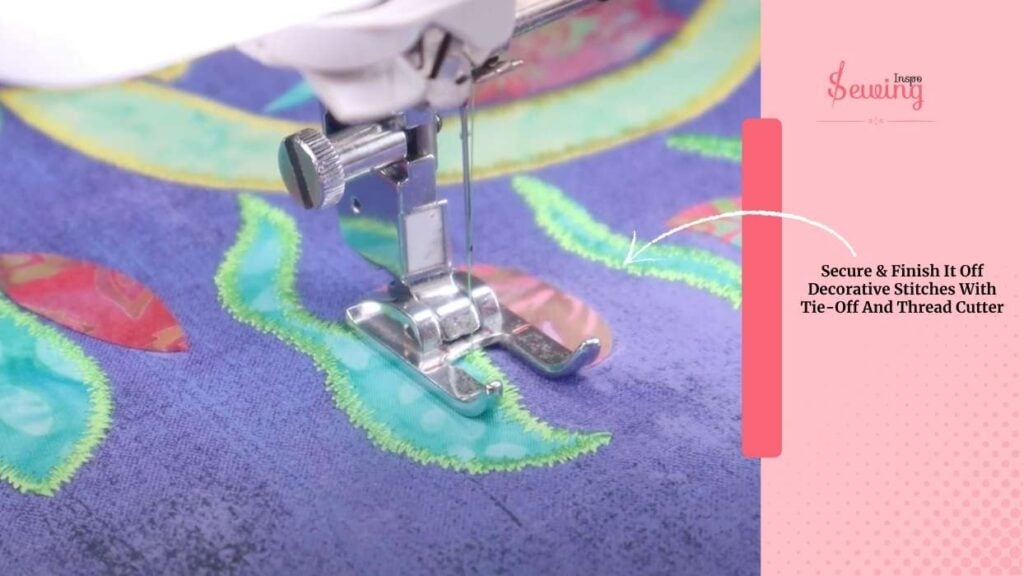
How To Use Decorative Stitches On Brother Sewing Machine?
Many sewinginspo readers asked us about the Brother sewing machine. Cause as a newbie, they brought a brother machine but don’t know what to do. So I thought to give a brief about it too.
- Use an open-toe foot or a decorative stitch foot (has a groove underneath for stitch flow).
- Lower top tension to 2–3.
- Adjust stitch length/width depending on the look you want (start small and test!).

- Try on a scrap of your main fabric with stabilizer to see how it stitches.
- Keep the center of your foot aligned with the applique edge.
- Circle with the needle down on the inside or outside edge depending on the direction.
- Shift and stitch slightly into the previous stitch to stay neat.
- Slightly overlap the starting point.
- Use Brother’s tie-off + thread cutting function for clean ends.
That’s it!
Frequently Asked Questions
What is the best decorative stitch sewing machine?
Brother and Janome are top picks! Personally, I love the Brother SE600—it’s beginner-friendly, packed with built-in decorative stitches, and even does embroidery. For heavy-duty and pro-level use, Janome’s Memory Craft series is a dream.
What kind of thread should I use for decorative stitches?
Machine embroidery thread rayon or polyester is best for decorative stitches. They’re smooth, shiny, and glide through your machine like a charm. And don’t forget a quality bobbin thread (like bobbin fill) to avoid thread bunching underneath.
What stitches are used for applique on a sewing machine?
For applique, I’ve had the best results with these stitches: Satin stitch, Blanket stitch.
Final Thoughts
Decorative stitches felt intimidating at first. But once I got the hang of the right setup and stitch choices, I was hooked! Now, appliqué projects like my leafy sea dragon look polished and professional.
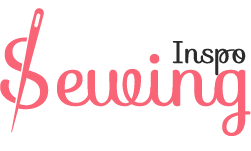


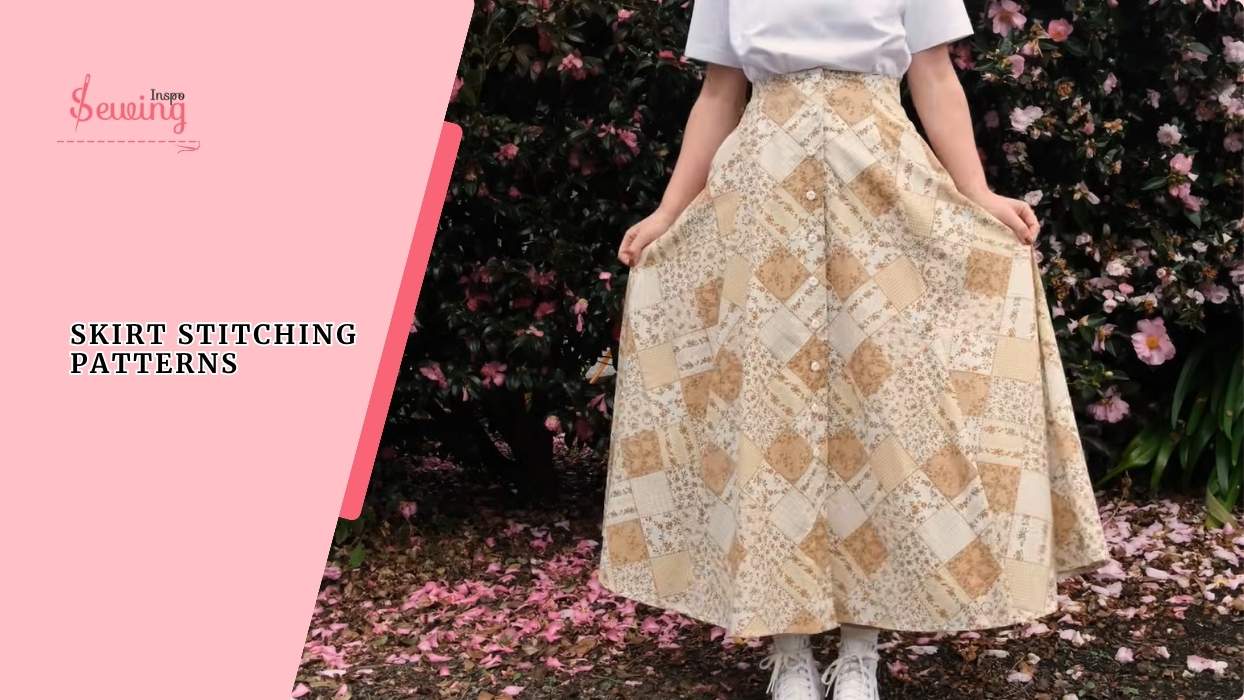
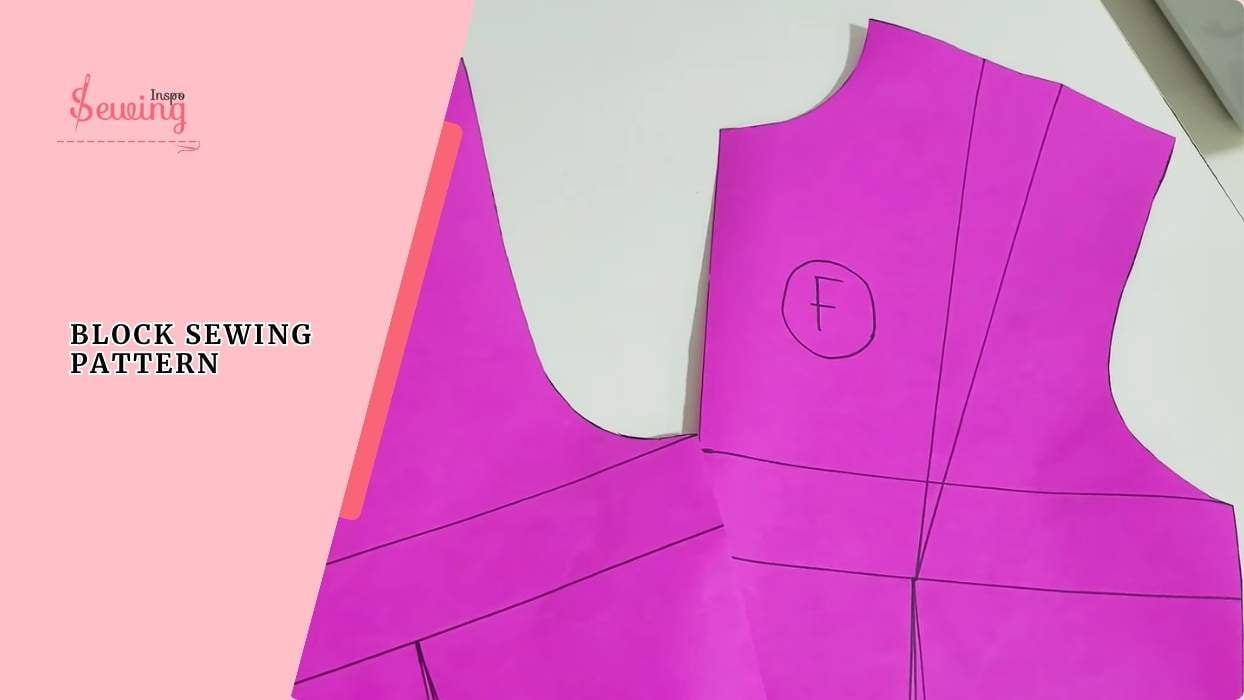
Leave a Reply